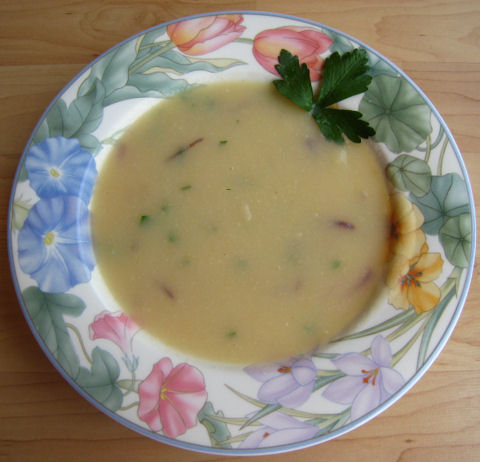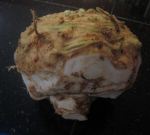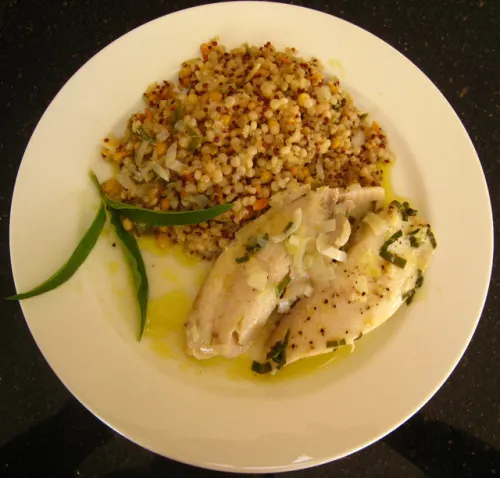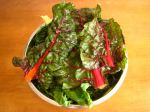Celeriac, or celery root, is one of my favorite vegetables … but my all-purpose kitchen knife must be razor sharp or I won’t even consider it on the menu. This root’s knobby outer layers are a toughie to carve off, not to mention dangerous, with a dull knife. But when you’ve peeled off the hairy outer layers, you’re left with a lovely white root that lends one of the most sublime flavors to soups and purées.
Warning: working with celeriac is a messy business and you may be shocked to see how much of the outer layer has to be sloughed off. But don’t worry, it’s worth the effort. Celeriac soup is truly out of this world.
INGREDIENTS:
- 2 large (about 4″ diameter) celery root bulbs, cut up in 1/2″ cubes
- large bowl of cold water w/ juice of 1 lemon
- 1 1/2 – 2 quarts soup stock (chicken or vegetable). If possible, use water used to cook celeriac cubes – see below – and add bouillon.
- 1 medium red onion, diced
- parsley (Italian, vs. curled, parsley somehow goes better)
- olive oil
- Blender
Carve off the tough, fibrous outer layer of the celery root till you’re left with a mostly white fleshy bulb. Then cut up the root to make ~1/2″ cubes. Put cubes in the cold lemon bath to prevent browning. When all the celeriac has been cubed, boil about a quart of water in a medium pot. Remove celeriac cubes from lemon bath, and add to boiling water. Discard lemon bath. Cook for about 20 min. You’ll know it’s done when a fork can easily go through a cube, but take care not to overcook.
Remove cubes from water and let cool in a bowl. Save the water to make your soup stock, as you’ll want to retain that wonderful flavor! I’ll add homemade chicken stock, a few bouillon cubes, or a couple of spoons of “Better Than Bouillon“.
In a soup pot, heat up olive oil and add diced onions. I love caramelized onions and sauté till they’re golden brown. Turn heat to medium-low. Just before the onions are ready, put about 1 cup of cooled broth in the blender and add another cup or two of the cooked diced celeriac. Purée till it’s nice and smooth, like mashed potatoes. Add to pot with onions.
Do this for the rest of the celeriac, always stirring the purée in the mix. When done, add the rest of the soup stock. Adjust the amount of soup stock to get the desired thickness of your soup. Gently heat but do not boil.
Sprinkle Italian parsely (a relative of carrots, celery and celery root in the Apiaceae family) into each bowl before serving. Bon appetit!
P.S. Making celeriac purée in place of mashed potatoes is very easy. Follow the recipe but limit the amount of liquids. You can add cream to give the purée some body. Or add peeled, cubed apples to combine flavors.







